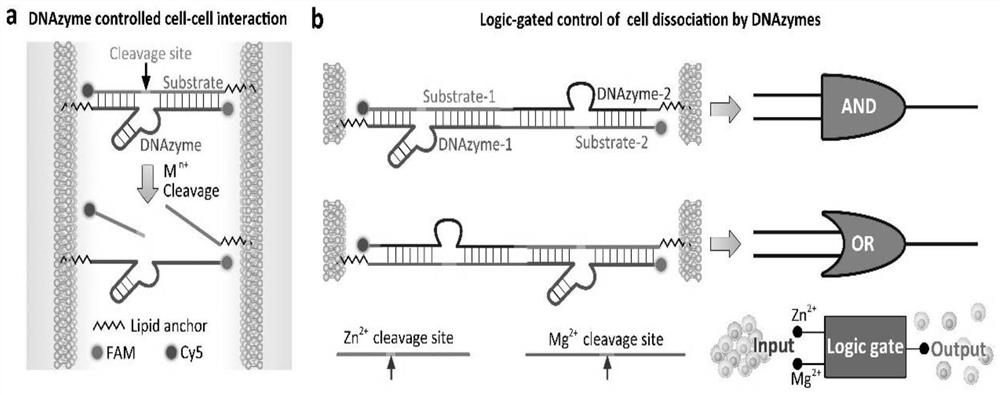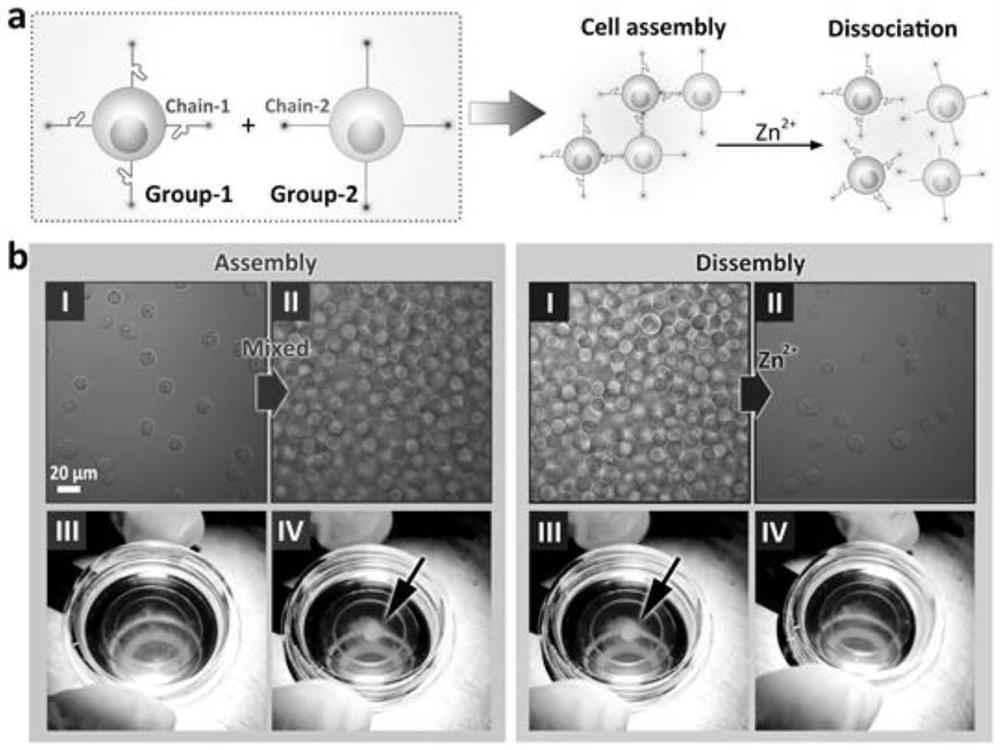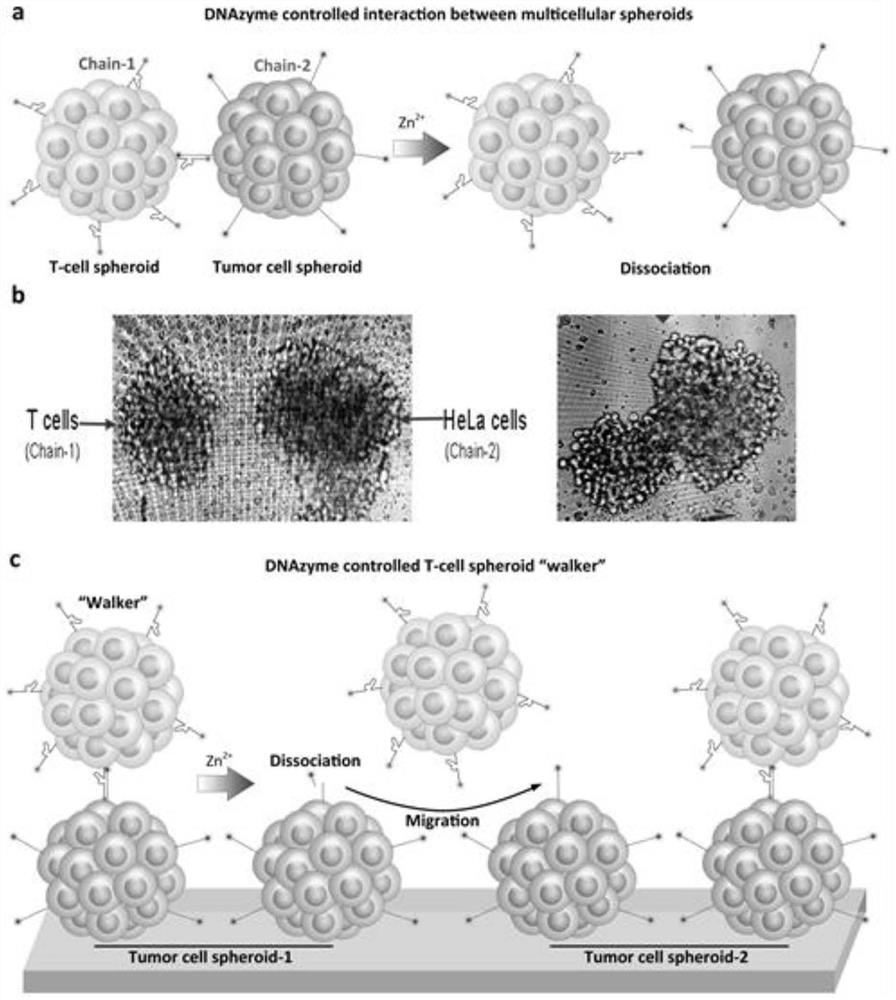Cell surface engineering method for controlling intercellular interaction and application of method
A cell surface and cell technology, applied in the field of controlling the interaction between cells, can solve the problem of no decomposition control, etc., and achieve the effect of migration
- Summary
- Abstract
- Description
- Claims
- Application Information
AI Technical Summary
Problems solved by technology
Method used
Image
Examples
Embodiment 1
[0029] (1) Before constructing the DNAzyme-based logic gate, we use a Zn 2+ The specific RNAcleavingDNAzyme (strand-1) and its substrate strand (strand-2) act as control switches, manipulating cellular assembly and disassembly. In the following cell assembly experiments, the cells were divided into two groups. Such as figure 1 In a, these two groups of cells were modified with strand-1 and strand-2, respectively. Both chains are modified with a cholesterol at the 5' end, allowing insertion into the cell membrane. The 3' ends of strand 1 and strand 2 were fluorescently imaged with FAM and Cy5, respectively. Cell-to-cell assembly can be achieved by hybridization of -1 and -2 strands. in Zn 2+ In its presence, the substrate-2 strand is cleaved from the ribonucleotide cleavage site, resulting in immediate cell disassembly. Taking HeLa cells as an example, cell coupling and depolymerization under the control of DNAzyme strategy were successfully obtained ( figure 1 b).
[0...
Embodiment 2
[0039] To explore the utility of DNAzyme-controlled intercellular interactions in biological applications, we further used Zn 2+ Specific DNAzymes and their substrates control the assembly and dissociation between two cell spheroids. Using previous DNAzyme / substrate strategies, cell-to-cell attachment and separation can be achieved not only in a single isolated cell, but also in two multicellular spheroids. A Zn observed under the microscope 2+ T-cell spheroids modified with a specific DNAzyme (chain-1) meet and ligate with HeLa tumor cell spheroids modified with a corresponding substrate (chain2). Join Zn 2+ After ionization, the double sphere assembly of T cells / tumor cells can be dissociated. In addition, we have further achieved the migration of T cell spheroids (chain-1 modification) from one tumor cell spheroid (chain-2 modification) to another tumor cell spheroid. When a T-cell spheroid approaches a tumor cell spheroid, the two spheroids form a link through double-s...
PUM
 Login to View More
Login to View More Abstract
Description
Claims
Application Information
 Login to View More
Login to View More - R&D
- Intellectual Property
- Life Sciences
- Materials
- Tech Scout
- Unparalleled Data Quality
- Higher Quality Content
- 60% Fewer Hallucinations
Browse by: Latest US Patents, China's latest patents, Technical Efficacy Thesaurus, Application Domain, Technology Topic, Popular Technical Reports.
© 2025 PatSnap. All rights reserved.Legal|Privacy policy|Modern Slavery Act Transparency Statement|Sitemap|About US| Contact US: help@patsnap.com



